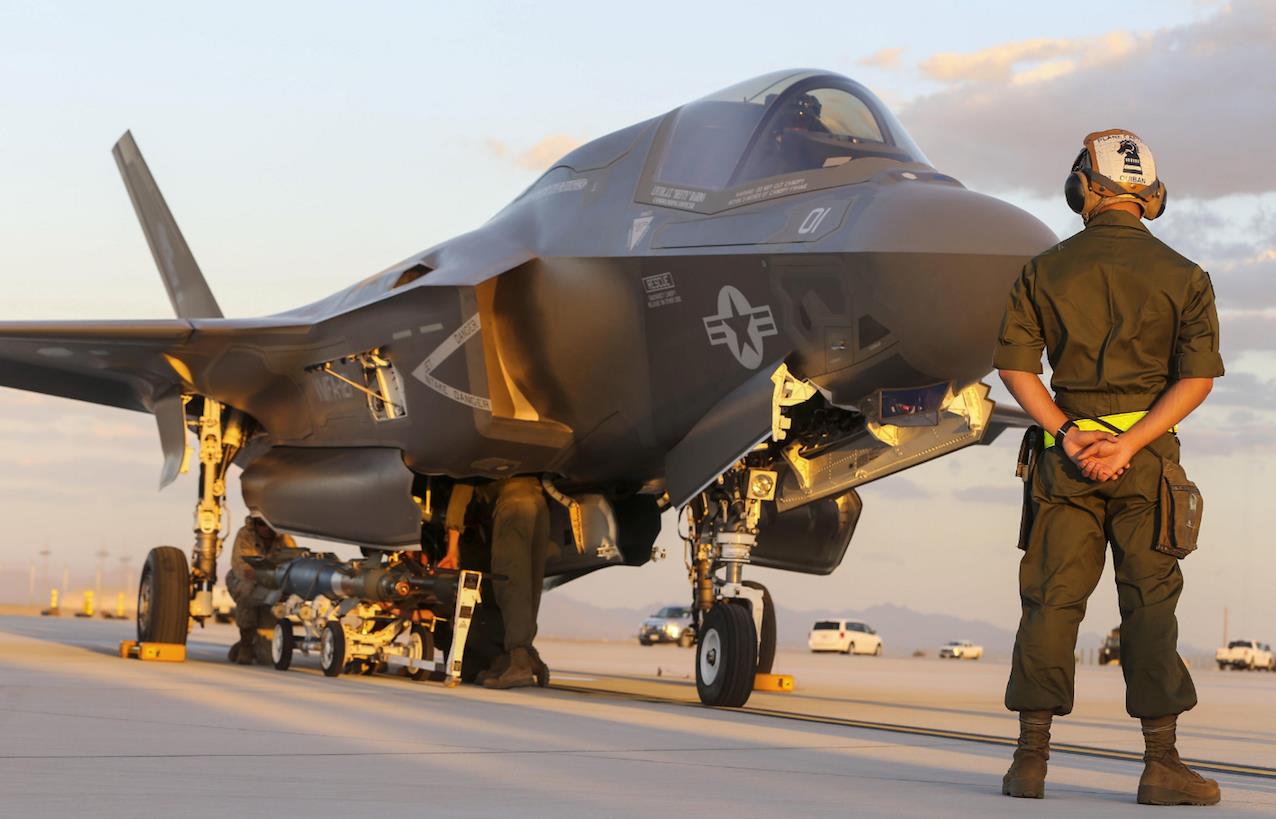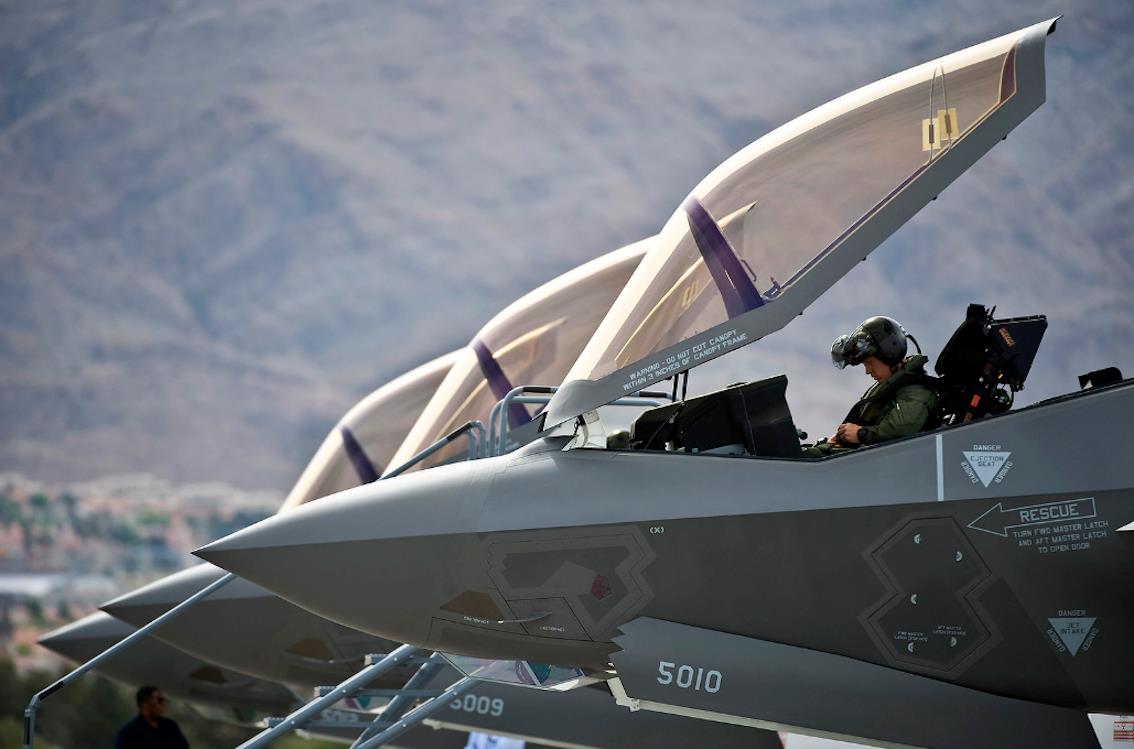(MENAFN- Asia Times) Lockheed Martin's controversial F-35 Lightning II stealth jet fighter has its detractors and proponents.
Having earned the nicknames the 'trillion-dollar mistake' and 'the flying super-computer,' among others, it has taken a beating from critics who point to its multitude of teething problems (some of which continue today), soaring costs and its inability to do anything really well.
My buddy and fellow pilot John Desramaux (an aviation expert from Ontario) and I often discuss (a.k.a. argue), over whether Canada should spend billions on the advanced, multi-role F-35, or just add more F/A-18s to its aging fleet of fighter jets.
As far as John is concerned, Canada should 'go fifth generation, or go home.'
But is there any evidence — solid evidence — that backs that up?
According to Mark Episkopos at National Interest , there is … and it should have put to rest many of the fears about the fighter's performance.
Red Flag is the premier air combat exercise of the US Air Force.
Over the span of three weeks, around 100 aircraft are tested in a variety of air-to-air, air-to-ground, space, reconnaissance, and electronic warfare scenarios.
It was at Red Flag 2017 that the F-35 platform faced one of its earliest and most gruelling trials.
A subpar showing at Red Flag would have been received by the F-35 program's critics as a sign of vindication, suggesting that they were right all along to question the fighter's capabilities and reliability.
But the result was an altogether different one: The F-35, as a defense observer put it, 'slaughtered the competition,' killing twenty aggressors for each F-35 downed, Episkopos writes.
According to Episkopos, the F-35 achieved this remarkable kill ratio 'in a realistic battlefield setting that included notional enemy air defenses, multiple air threats, and electronic countermeasures (ECM).'

US Marines with Fighter Attack Squadron 121, 3rd Marine Aircraft Wing, conduct a hot load on the F-35B Lightning at Marine Corps Air Station Yuma, Ariz. Credit: US Marines.
Well, as real as one can get in simulated warfare.
The exercises also served as a live demonstration of the F-35's sensor fusion feature — that is, its ability to generate a live picture of the battlefield that can be fed to nearby friendly units, Episkopos writes.
'Before, where we would have one advanced threat and we would put everything we had—F-16s, F-15s, F-18s, missiles, we would shoot everything we had at that one threat just to take it out—now we are seeing three or four of those threats at a time,' Lt. Col. George Watkins, 34th Fighter Squadron commander, told Aviation Week .
'Just between [the F-35] and the [F-22] Raptor, we are able to geolocate them, precision-target them, and then we are able to bring the fourth-generation assets in behind us after those threats are neutralized,' Watkins explained. 'It's a whole different world out there for us now.'
The F-35 contains more than eight million lines of computer code that run on its advanced digital systems, writes Wallace C. Gregson of National Interest.
It processes data onboard, and shares information and its operational picture with ground, sea, and air and other assets. Multiple F-35s across the battlespace can collect exponentially more data and share sophisticated operational pictures.
The F-35 can fight, air to air, air to surface, and air to space, writes Gregson.
It can serve as a firing platform for other weapons as directed. But its real advantage lies in allowing the rest of us to fight, across air, land, sea, undersea, space, and cyberspace, within a highly automated, robust network at an operational tempo that exceeds any opponent.
Nor can the F-35's success be dismissed as a one-off, as the fighter showcased similarly strong performance at Red Flag exercises in 2019, Episkopos writes.

A F-35 pilot straps in for a flight at Nellis Air Force Base at Las Vegas, Nevada. Courtesy, USAF photo.
Referring to the exercises, Air Force Chief of Staff Gen. Dave Goldfein noted that the F-35 was 'exceeding our expectations when it comes to not only being able to survive, but to prosecute targets.'
According to data from the drills, the F-35 averaged seven surface-to-air missile system and five air asset kills per mission.
The Italian pilots who participated in the Red Flag exercises were overflowing with praise: 'The results we have achieved in these two weeks are almost unbelievable: the statistics do not need comments,' said Maj. Alessandro P.
More recently, F-35 squadrons occupied a prominent battlefield role during Red Flag drills in early 2020, Episkopos writes.
'The F-35 also has an extremely high level of battlefield awareness and can pass that information to other F-35s anywhere in the fight without any pilot interaction,' explained 421st Fighter Squadron Lt. Col. Richard Orzechowski.
'In terms of the amount of information, think fiber-optic versus dial-up internet. That's a huge advantage.'
Whether the F-35 can shoot down 20 enemy fighter jets in one go, in the chaos of actual battle conditions, remains to be seen.
But there is no question, that it is the most advanced fighter jet on the planet — and any enemy who does not take it seriously, is making a deadly mistake.
MENAFN16042021000159011032ID1101930032
Legal Disclaimer:
MENAFN provides the information “as is” without warranty of any kind. We do not accept any responsibility or liability for the accuracy, content, images, videos, licenses, completeness, legality, or reliability of the information contained in this article. If you have any complaints or copyright issues related to this article, kindly contact the provider above.